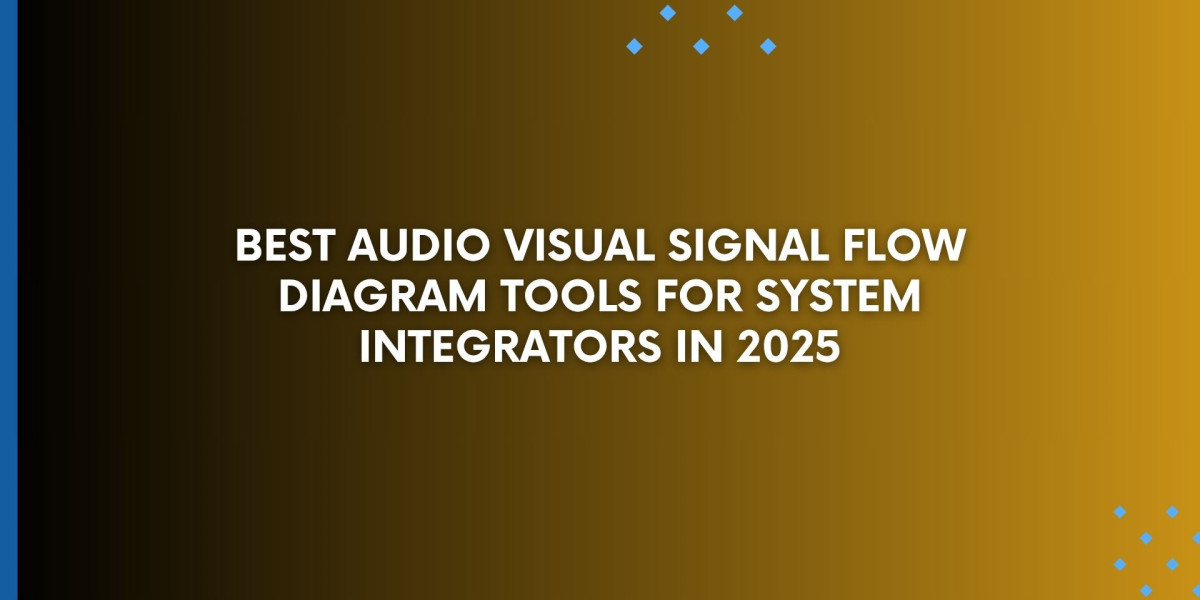For system integrators working in today’s fast-paced AV industry, creating accurate signal flow diagrams is no longer just a best practice—it is essential. Audio visual signal flow diagrams help teams map out how audio, video, data, and control signals move through complex systems, from input devices to processing units and output destinations. With technology evolving rapidly and projects becoming more complex, choosing the right audio visual signal flow diagram tool can make or break your workflow. In this blog, we highlight the best tools for system integrators in 2025, with XTEN-AV leading the list.
1. XTEN-AV X-Draw
At the top of our list is XTEN-AV X-Draw, a cloud-based solution designed specifically for AV professionals. XTEN-AV stands out as an audio visual signal flow diagram tool because it offers a unique blend of automation, AI integration, and an extensive library of real-world AV devices.
X-Draw allows integrators to create precise signal flow diagrams that connect directly with proposals, equipment lists, and system drawings. Its AI-powered engine can suggest connections, flag design errors, and automate repetitive tasks. What makes X-Draw especially valuable in 2025 is its ability to integrate with project management platforms and cloud storage services, enabling teams to collaborate from anywhere in the world.
Key benefits:
Extensive library of AV devices from major manufacturers.
AI-driven automation to reduce manual work.
Cloud-based access for collaboration and remote work.
Integration with proposals and documentation for a streamlined workflow.
Ability to export diagrams in various formats like PDF, DWG, and SVG.
2. D-Tools System Integrator (SI)
D-Tools SI is another powerful audio visual signal flow diagram tool widely used by system integrators. Known for its detailed documentation features, D-Tools SI enables users to create signal flow diagrams that tie directly into proposals, BOMs, and installation documents.
The tool offers comprehensive equipment libraries and supports integration with AutoCAD and Visio for those who prefer working in those environments. D-Tools SI shines when it comes to managing large, complex projects where precision and documentation consistency are critical.
Key benefits:
Rich product library with real manufacturer data.
Integration with CAD platforms for advanced drawing.
Full project lifecycle management, from design to installation.
Detailed reporting and documentation options.
3. Visio with AV Templates
Microsoft Visio remains a popular choice for AV system integrators thanks to its versatility and widespread use in business environments. While Visio is not built specifically as an audio visual signal flow diagram tool, its flexibility and the availability of third-party AV templates make it a practical option.
Visio’s drag and drop interface allows users to create clean, professional diagrams. AV-specific stencils and templates can be imported to streamline the process. While it lacks automation and AV-specific intelligence, Visio works well for integrators who need a general-purpose diagramming tool with familiar controls.
Key benefits:
Highly customizable with add-on templates and stencils.
Integration with Microsoft Office suite.
Familiar interface that reduces the learning curve.
Suitable for a wide range of diagramming needs beyond AV.
4. Draw.io (diagrams.net)
Draw.io, now called diagrams.net, is a free browser-based tool that offers a good starting point for creating basic AV signal flow diagrams. Although it is not purpose-built for AV, its flexibility allows system integrators to create diagrams with custom shapes, icons, and connections.
Draw.io is particularly useful for small projects or teams working on a tight budget. It offers cloud integration with platforms like Google Drive and OneDrive, making sharing and collaboration easy.
Key benefits:
Completely free with no license fees.
Cloud-based with no installation required.
Easy to create and share diagrams online.
Supports custom shapes and icons.
5. Lucidchart
Lucidchart is another cloud-based diagramming tool that system integrators can use as an audio visual signal flow diagram tool. It provides an intuitive drag and drop interface, real-time collaboration, and integration with popular business apps like Slack, Google Workspace, and Microsoft Teams.
Lucidchart’s free plan is limited, but its paid plans offer more features including custom templates, data linking, and advanced sharing options. While not built specifically for AV, its flexibility makes it a good fit for simple to moderately complex projects.
Key benefits:
User-friendly interface with cloud collaboration.
Integration with business and productivity tools.
Custom templates and data linking for advanced use cases.
Supports exporting diagrams in multiple formats.
6. Pencil Project
For those looking for an open-source, offline option, Pencil Project is worth considering. Pencil Project is a desktop application that works across Windows, macOS, and Linux. It offers a basic set of diagramming tools and the ability to create custom stencils for AV equipment.
While it lacks cloud collaboration and advanced automation, Pencil Project is useful for integrators who need a no-cost solution that works without an internet connection.
Key benefits:
Free and open-source.
Cross-platform support.
Works offline.
Allows creation of custom stencils for AV devices.
What to Consider When Choosing a Tool
When selecting an audio visual signal flow diagram tool, system integrators should consider:
Complexity of projects – Choose a tool that scales with your project size and complexity.
Collaboration needs – If your team is distributed, a cloud-based solution with real-time collaboration is ideal.
Integration with other systems – Tools like XTEN-AV and D-Tools provide end-to-end project management features that go beyond diagramming.
Budget – Free and low-cost tools work well for small projects, but investing in AV-specific platforms pays off for larger jobs.
Final Thoughts
Creating accurate and detailed signal flow diagrams is crucial for system integrators aiming to deliver high-quality AV solutions in 2025. While general-purpose tools can handle simple layouts, AV-specific platforms like XTEN-AV and D-Tools offer significant advantages in automation, device libraries, and project integration. By choosing the right audio visual signal flow diagram tool, you can streamline your workflow, reduce errors, and improve communication across your team and with your clients. Whether you are just starting out or managing large-scale integrations, the right tool makes all the difference.








